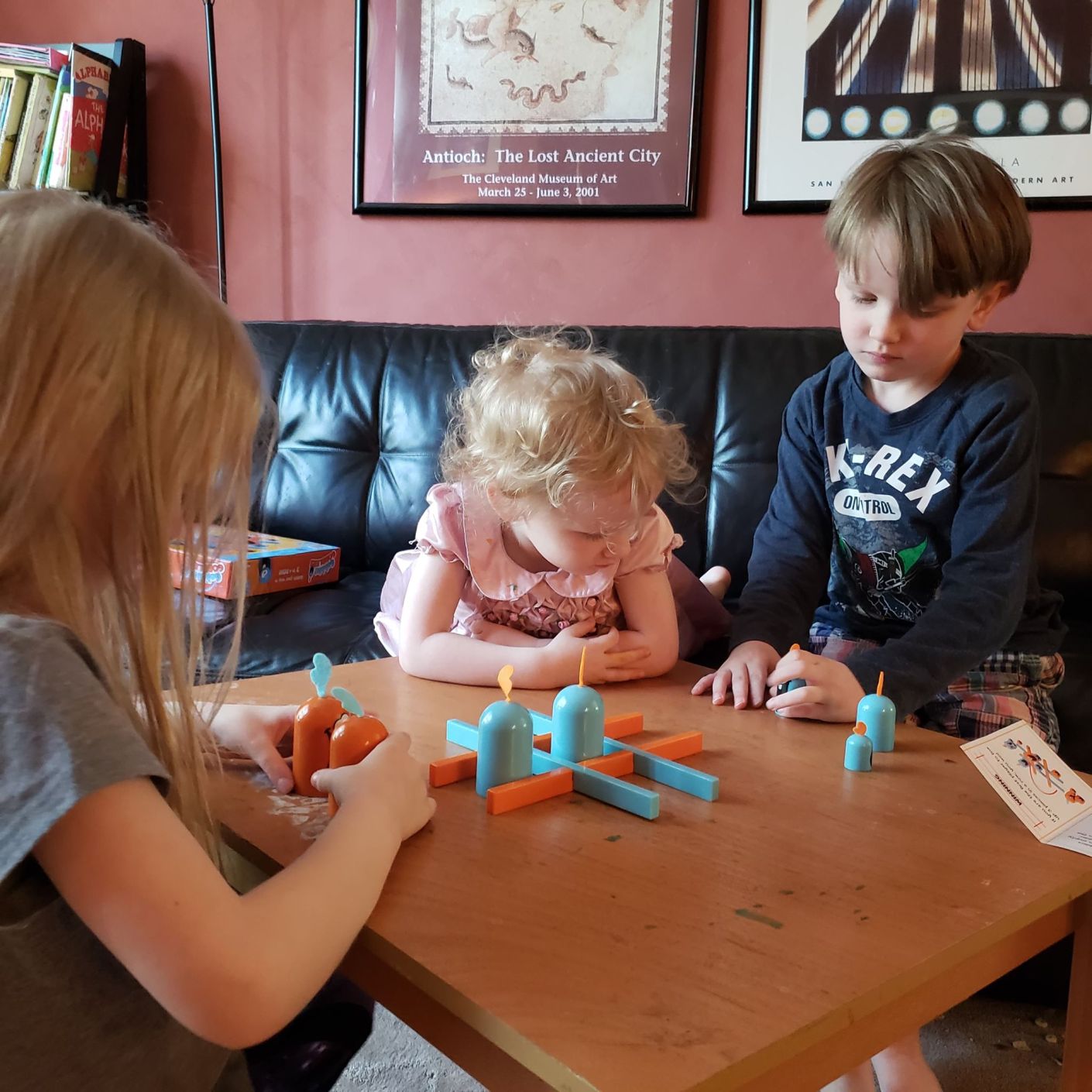
Disclaimer: I received the game Gobblet Gobblers from Timberdoodle in exchange for an honest review of the product. All opinions are my own and my children’s.

A lot of people are gameschooling, and it’s easy to see why. In fact, when I was homeschooling my big kid, we would do a morning board game between our langauge arts and math curricula. One of our favorites was Lost Cities, another was the classic, Blockus. Since then, we’ve added a numnber of games to our home, and our family loves gaming – so it seems natural to add games into our homeschool. When Timberdoodle offered the opportunity to review Gobblet Gobblers, I jumped at the chance. I just knew that it would be a hit with at least Miss 6 and Mr. 4. Timberdoodle includes it in their Kindergarten complete currriculum kit.
What Is Gobblet Gobblers?

Gobblet Gobblers is a fun take on Tic-Tac-Toe. Like the game it’s based upon, it requires thinking skills and strategy. The game comes with a playing grid you put it together, and twelve game pieces. The game helps build memory, problem-solving skills, visual perception, and focus and attention.
Game play is simple, in addition to the rules for tic-tac-toe, the Goblet Gobblers can “eat” smaller game pieces of the opposite color. The goal is to get three in a row. Not only is the game great at encouraging those important critical thinking skills, but it’s also great fun.
What We Thought

We had fun. First, I played the game with Miss 6. She quickly grasped the rules and got a big kick out of the idea that she could “eat” my game piece. After a few games – they are very short, she won her first game, and by then, Mr. 4 was intrigued and challenged his big sister to a match. Both of them really enjoyed it, and Mr. 4 very quickly caught on and was using strategy to beat his sister (perhaps because he’s our resident tic-tac-toe afficionado…he loves creating a situation where there are two ways he can win).https://video.wordpress.com/embed/biqAZLvQ?preloadContent=metadata&hd=1&cover=1
Miss 3 came along, and while she thought the game was cute, it was still just a little beyond her. We’re still working on taking turns and following game rules with her, so we’ll try it again in a couple of months.

How To Use To Teach Thinking Skills:

When playing the game, here are some ideas for how to make the educational value stretch:
- Ask about your child’s strategy when the game ends.
- Talk about your own strategy when playing.
- Come up with challenges: what happens when both players start with their biggest piece on the board? The smallest?
- Try plotting out a partly-finished game and have your child see how they could win from the point the game is set up in.
- Try to create a draw-game. Can you play where no one wins? (Our first game was a draw!)
Purchase Gobblet Gobblers ($15) or Timberdoodle’s non-religious complete kindergarten curriculum kit ($937).







